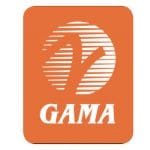EASA Wants Airbus A350 Engine Cover Anti-Icing System Checks
By Rytis Beresnevecius, Simple Flying
The European Union Aviation Safety Agency (EASA) has mandated detailed inspections of the Airbus A350-900 and A350-1000 engine air inlet cowls after elongated locating holes on the part were found during maintenance, according to the regulator.
Loss of anti-icing protection
EASA stated that A350 nacelle anti-icing (NAI) forward bullheads have been found with elongated locating holes, which are used during the manufacturing process. However, before the aircraft is delivered to a customer, they are closed by fasteners. The regulator noted a determination was made that if these fasteners are loose, they may vibrate and cause elongation of the locating holes, which could result in a reduced performance of the NAI system.
“This condition, if not detected and corrected, could lead to the undetected loss of NAI protection on both engines, possibly resulting in loss of control of the aeroplane.”
Addressing the issue, Airbus issued a service bulletin (SB), SB A350-54-P009, on December 22, 2023, which referred to Collins Aerospace SB RA35071- 029, published on November 16, 2023. As such, the regulator mandated a special detailed inspection (SDI) of the A350s’ engine air inlet cowls with specific part numbers.
Compliance time
If any discrepancy is detected during an SDI, the airline or a maintenance organization has to report its findings to Collins Aerospace, which will provide the corrective instructions with a specific compliance time. EASA published the directive on March 6, 2024, with an effective date being March 20. The European regulator stated that operators must inspect aircraft that have the affected part within 78 months of the directive’s effective date or 144 months after the A350’s date of manufacture, whichever occurs first.
Furthermore, airlines must report their findings to Collins Aerospace within 30 days following the SDI. Delta Air Lines was the only operator that commented on the proposed AD (PAD). The US-based airline questioned why operators must submit their findings since neither Airbus nor Collins Aerospace’s SBs mandated this.
The Delta Air Lines representative also suggested that the findings should be reported 30 days after the aircraft’s return to service, not 30 days after the SDI. EASA disagreed with both comments, saying that reporting findings was “deemed an essential requirement to assess the status of the fleet and validate the risk assessment associated to the unsafe condition addressed by this AD.”
“Comment not agreed. The 30 days from inspection finding reporting requirement is deemed appropriate, striking a good balance between swiftness of reporting and the limited burden of this additional requirement.”
Boeing’s anti-icing issues
Amidst intensifying scrutiny around the safety of its products, Boeing withdrew an exemption request for the 737 MAX 7, which would have allowed the company to circumvent a requirement by the Federal Aviation Administration (FAA) for the aircraft’s engine nacelle inlet structure and engine anti-ice (EAI) system in January 2024.
The withdrawal, communicated by Boeing to the FAA on January 29, came several weeks after the Alaska Airlines flight AS1282 incident when a mid-cabin door plug blew out while a 737 MAX 9 was climbing out of Portland International Airport (PDX).
Subsequently, the FAA issued a notice of proposed rulemaking (NPRM) on February 20. The NPRM detailed that airlines had reported heat damage on multiple engine inlets around the engine anti-ice (EAI) duct within the inlet aft compartment of the Boeing 787, prompting the US-based regulator to issue the NPRM.




